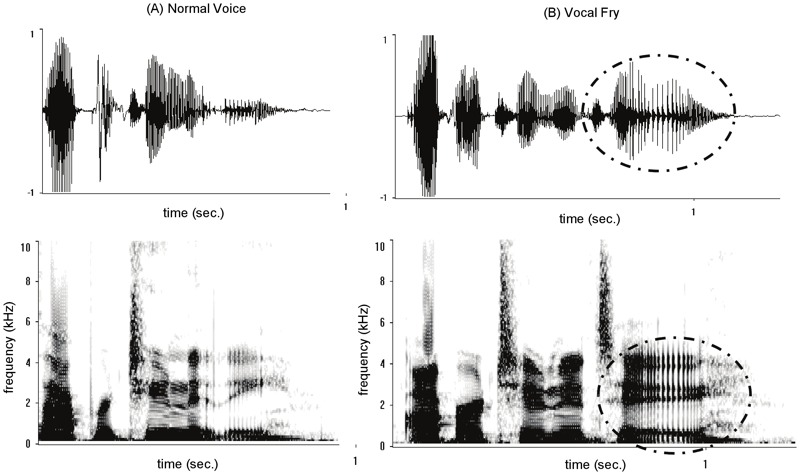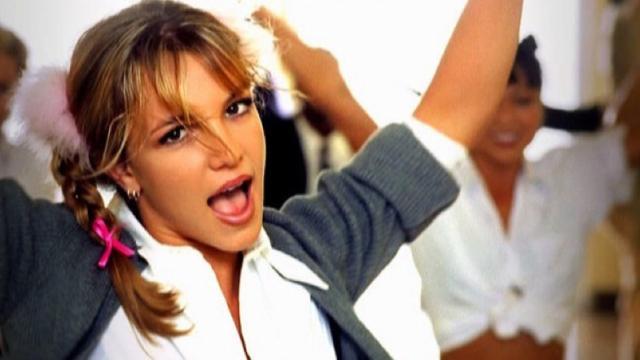The growing popularity of so-called “vocal fry”, particularly among young women, is either a hot new trend or the bane of cultured discourse, depending on who you ask. But when it comes to popular music, vocal fry actually enhances expressiveness.
Oh, baby, baby: Britney Spears and her trademark vocal fry.
That’s the conclusion of John Nix, a professor of voice at the University of Texas, San Antonio, who studies this lowest vocal register to better understand the emotional properties of music. He described his work this week at a meeting of the Acoustical Society of America in Salt Lake City, Utah. He previously studied vocal fry back in 2005, and decided to revisit the topic when his graduate student, Mackenzie Parrot, began investigating its use in various pop music styles.
Just what is vocal fry? It’s conceptually related to “val-speak”, a dialect historically associated with the female denizens of the San Fernando Valley in Southern California. Val-speak is characterised by ending sentences with a slight rise in pitch, as if asking a question, now known as “uptalk“. In contrast, vocal fry is a drop in pitch, almost a low growl at around 70 Hz. (The low end of human hearing range is 20 Hz.) Think Britney Spears croaking out “Oh, baby, baby“, or Kesha growling that she woke up “feeling like P-Diddy”.
The emotional impact of any given piece of music is, by definitive, subjective, but Nix looked particularly at the aesthetics of different styles. “Unamplified styles, such as classical music, tend to disguise effort and express emotion in more subtle ways,” he told Gizmodo. “Amplified styles, such as popular music, tend to display effort as something genuine, intimate, raw, exciting, and emotional. Fry may be one way to communicate such effort, or honest, raw emotion.”
Acoustically, vocal fry is marked by the shortest of gaps in between the utterance — barely the duration of a blink of an eye. That gap occurs because the singer relaxes and shortens the vocal cords, compared to regular speech. So when air flows through them, they close all the way and then pop back open. It sounds a bit like the sizzle and pop of a frying pan, hence the name.
A sample waveform is below:

R.C. Anderson et al./PLOSOne
Like uptalk, vocal fry in female speech in particular is often associated with “ditziness”. In fact, a 2014 study found that women who speak in the fry register during job interviews are viewed more negatively than men who do so, perhaps because women are expected to have higher voices in general.
But it might just depend on your generation: younger people don’t seem to mind the fry nearly as much as the over-40 crowd. And people tend to rate female singers using the lower vocal fry register as more expressive, according to Parrot’s own study. It’s certainly served Spears very well.
Still, you won’t find opera singers using vocal fry, according to Nix, if only because it’s too low to project very far without amplification. “Vocal fry is low in frequency and intensity, so it doesn’t have anywhere near the carrying power of high, loud sounds — think an opera singer or a Broadway belter,” said Nix. “In order to produce fry, you can’t use a lot of subglottic pressure or air flow, both of which are highly important to sound intensity.”
He studied people singing with and without vocal fry, with and without instrumental accompaniment, in a recital hall with various microphones spaced at different distances from the singers. He found that the louder the accompaniment, and the further away the listener (or microphone), the more difficult it is to hear the vocal fry. “So this explains at least part of the difference between amplified and non-amplified styles,” said Nix.
Many voice teachers tend to discourage vocal fry by their students, because over time, they could lose the higher notes in their register. Nix advises moderation. “I want my students to choose to do it for an expressive purpose,” he said in a statement. “It is one of the tools that they have in their tool box. Use it wisely and judiciously, [and] save it for those times when you really want to express something.”
